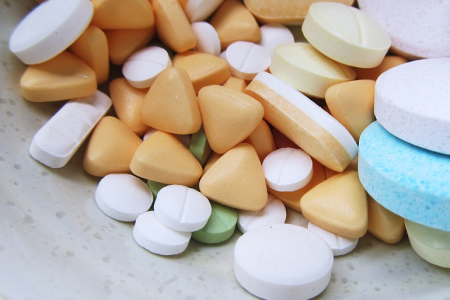From research dating back to 2011, 3.4% of drivers in the Netherlands were shown to drive while under the influence of drugs and/or medicines [13]. More recent data are unavailable. Judging by general figures about drug use and figures about occasional measurements, it may be assumed that cannabis is the drug most commonly used in Dutch traffic, and that ecstasy, laughing gas (nitrous oxide), cocaine and amphetamines are also often used. In a 2018 comprehensive questionnaire study of driving behaviour in the previous 30 days, 5.1% of Dutch drivers indicated having occasionally driven under the influence of drugs and 14.9% having occasionally driven under the influence of medicines impairing fitness to drive [14].
Drugs
European research figures (DRUID) about driving under the influence of drugs in the Netherlands date back to 2011 or earlier and are therefore outdated [13]. This European study showed that an approximate 2.8% of the Dutch drivers tested had traces of drugs in their systems. Of these, 2.1% drove under the influence of cannabis (hashish and weed), followed by cocaine (0.66%) and amphetamines (0.37%). Research carried out by the Dutch Public Prosecution Service between June 2017 and July 2018 showed that almost half (600) of the 1250 drug users caught while driving had used a combination of intoxicants; either different kinds of drugs or drugs together with alcohol [15]. Among the Dutch population, cannabis is known to be the most commonly used drug, while cocaine, ecstasy, amphetamines and laughing gas (nitrous oxide) are also often used [16]. In 2018, 63 drivers out of 106 confirmed cases of drug use in the Dutch province of Zeeland were shown to have only used cannabis, 22 to have used hard drugs like cocaine, xtc, or amphetamines and 21 to have used multiple drugs (source: Provinciale Zeeuwse Courant [17]). These figures are based on selective police drug checks rather than from scientific random sampling of Dutch traffic.
Medicines
The 2011 European study showed benzodiazepines (medicines with a relaxing effect) to be the medicine most commonly found in the blood of drivers (0.44% [13]). This is not surprising since one in ten Dutch people (18+) use sleeping pills or sedatives [18] and most of these are benzodiazepines. A 2013 estimate showed that 30-45% of the over-65s (about 750,000 to 1 million people) in the Netherlands used five or more different medicines [19]. Research has shown an increased crash risk on account of medicine combinations [20]. Data about the number of crashes among drivers under the influence of multiple impairing medicines are unavailable.
